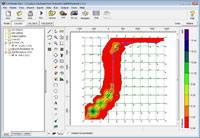
Integrated Graphical User Interface
Fully integrated interface combining easy to use graphical tools (e.g., roadway links, and receptors), seamless model run, and automated contouring and posting of results.
Traffic Air Dispersion Model
Overview
CALRoads View is an air dispersion modeling package for predicting air quality impacts of pollutants near roadways. CALRoads View combines the following mobile source air dispersion models into one seamless integrated graphical interface: CALINE4, CAL3QHC, and CAL3QHCR
These US EPA models are used for predicting air pollution concentrations of carbon monoxide (CO), nitrogen dioxide (NO2), particulate matter (PM), and other inert gases from idle or moving motor vehicles.
The CALINE 4 model predicts air concentrations of carbon monoxide (CO), nitrogen dioxide (NO2), and suspended particles near roadways. Options are available for modeling near intersections, parking lots, elevated or depressed freeways, and canyons.
The CAL3QHC model estimates total air pollutant concentrations (CO or PM) near highways from both moving and idling vehicles. This model also estimates the length of queues formed by idling vehicles at signalized intersections.
The CAL3QHCR model is an enhanced version of CAL3QHC, that can process up to a year of hourly meteorological data. Vehicular emissions, traffic volume, and signalization (ETS) data can be specified for each hour of a week.
Features

Fully integrated interface combining easy to use graphical tools (e.g., roadway links, and receptors), seamless model run, and automated contouring and posting of results.
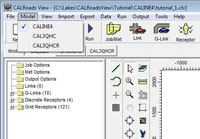
CALRoads View supports three US EPA traffic models in one seamless interface:, CALINE4, CAL3QHC, and CAL3QHCR. Change models in your project with the click of a button.
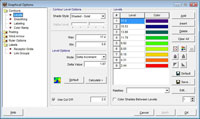
A wide range of contouring options and controls are available, making it easy to present your results just the way you want them
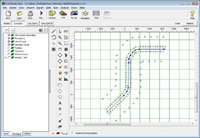
CALRoads View allows you to run a project with an unlimited number of receptors, avoiding the restrictions imposed by the models. You can specify a Cartesian receptor grid, discrete receptors, and receptors along the roadways.

CALRoads View offers the ability to model free-flow traffic, intersections, parking lots, street canyons, traffic patterns and different receptor configurations.
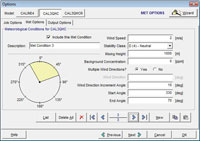
CALINE4: You specify the worst-case met conditions.
CAL3QHC: You can specify one or more sets of meteorological conditions to be analyzed.
CAL3QHCR: You can specify up to a full year of hourly met data.
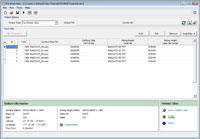
Rammet View, which is part of the CALRoads View package, allows you to pre-process meteorological data to be used with the CAL3QHCR model.
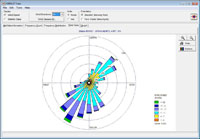
WRPLOT View, which is part of the CALRoads View package, allows you to create windrose plots for your meteorological data. Options to manipulate the appearance of the windrose are available such as colors, petal size, grid sectors, etc.
Technical Specifications
CALRoads View is an interface for the CALINE4, CAL3QHC and CAL3QHCR models. See below the technical specifications for these three popular traffic air dispersion models:
1.CALINE4| Parameter | Description | |
|---|---|---|
| Model Name | CALINE4 - California Line Source Dispersion Model | |
| Developed By | California Department of Transportation (Caltrans) | |
| Model Type | Steady-state Gaussian Plume model | |
| Time Step | 1 hour | |
| Range | Near-field | |
| Terrain | Not modeled | |
| Building Downwash | Not modeled | |
| Source Types | Line source (road) | |
| Input Meteorology | User selected meteorological condition | |
| Wind Field | Homogeneous | |
| Release Types | Vehicle emissions | |
| Emission Types | Constant | |
| Atmospheric Chemistry | None | |
| Regulatory Status | US EPA regulatory model for traffic dispersion | |
2.CAL3QHC| Parameter | Description | |
|---|---|---|
| Model Name | CAL3QHC | |
| Developed By | U.S. Environmental Protection Agency | |
| Model Type | Steady-state Gaussian Plume model | |
| Time Step | Variable | |
| Range | Near-field | |
| Terrain | Not modeled | |
| Building Downwash | Not modeled | |
| Source Types | Line source (road); free flow and queue | |
| Input Meteorology | User selected meteorological condition | |
| Wind Field | Homogeneous | |
| Release Types | Vehicle emissions | |
| Emission Types | Constant | |
| Atmospheric Chemistry | None | |
| Regulatory Status | US EPA regulatory model for traffic dispersion | |
3.CAL3QHCR| Parameter | Description | |
|---|---|---|
| Model Name | CAL3QHCR | |
| Developed By | U.S. Environmental Protection Agency | |
| Model Type | Steady-state Gaussian Plume model | |
| Time Step | Variable | |
| Range | Near-field | |
| Terrain | Not modeled | |
| Building Downwash | Not modeled | |
| Source Types | Line source (road); free flow and queue | |
| Input Meteorology | Hourly surface data and mixing height data (through RAMMET) | |
| Wind Field | Homogeneous | |
| Release Types | Vehicle emissions | |
| Emission Types | Constant and variable (traffic patterns) | |
| Atmospheric Chemistry | None | |
| Regulatory Status | US EPA regulatory model for traffic dispersion | |
System Requirments
This product is a Microsoft Windows-based program that can be installed in the following Windows operating systems:
Minimum requirements: